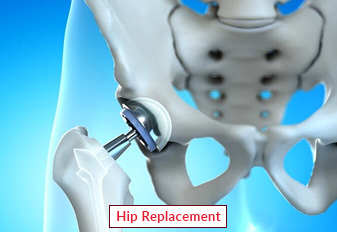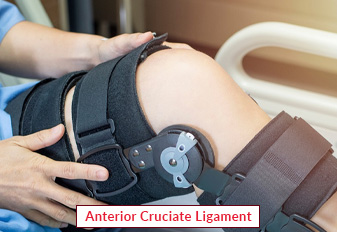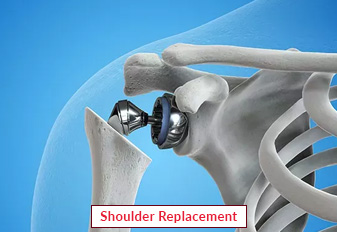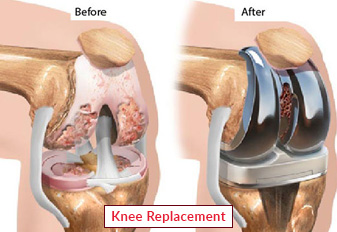Hip Replacement surgery

Hip replacements are performed in a hospital or surgery center. They are often considered outpatient procedures, even though you might need to stay a night or two for observation or to resolve complications. On average, hip replacement surgeries last about two hours. A partial hip replacement might require less time, and a double hip replacement may take longer. Complications during surgery might also extend the surgery time.
Some patients might spend time in an inpatient rehabilitation unit to prepare for independent living at home. Whether you go home or to a rehabilitation unit after surgery, you will need physical therapy for several weeks until you regain muscle strength and good range of motion.
Book an AppointmentAbout Hip Replacement
Hip replacement is primarily performed to relieve chronic hip pain, typically caused by conditions like osteoarthritis, rheumatoid arthritis, or hip fractures. It can significantly reduce or even eliminate pain, allowing patients to regain their mobility and independence.
Benefits of Hip Replacement
Hip replacement surgery offers numerous benefits for individuals suffering from debilitating hip joint pain or dysfunction. This procedure, also known as hip arthroplasty, can significantly improve a person's quality of life by addressing a range of physical and functional limitations. Here are six key benefits of hip replacement:
- Pain Relief: The most immediate and dramatic benefit of hip replacement is the relief from chronic hip pain. Conditions like osteoarthritis, rheumatoid arthritis, or hip fractures can cause severe discomfort and inflammation. Hip replacement replaces the damaged joint with an artificial one, eliminating pain and discomfort, and allowing patients to return to a pain-free, active lifestyle.
- Improved Mobility: Hip pain can severely limit a person's mobility, making simple tasks like walking, climbing stairs, and even getting out of a chair painful and difficult. Hip replacement surgery can restore proper joint function, providing greater ease of movement and enhanced overall mobility.
- Enhanced Quality of Life: With pain and mobility issues resolved, patients experience a notable improvement in their overall quality of life. They can once again engage in activities they may have had to give up due to hip pain, such as hiking, dancing, or playing sports. This leads to increased independence and a more fulfilling life.
- Better Sleep: Chronic hip pain often interferes with sleep, as individuals find it uncomfortable to rest on the affected side or even sleep through the night. After hip replacement, patients typically enjoy better sleep and a more restful night's rest.
- Reduced Medication Dependency: Many individuals with severe hip pain rely on pain medications to manage their discomfort. Hip replacement can significantly reduce or even eliminate the need for these medications, thus sparing patients from potential side effects and addiction issues associated with long-term medication use.
- Longevity and Durability: While hip replacement is not a permanent solution, modern artificial hip joints are designed to last for many years. Patients often experience 15-20 years or more of use from their hip implants. Younger patients may require revisions, but these procedures have become more effective and less invasive over time.
Procedure of Hip Replacement
The process begins with an operation called an osteotomy, in which the orthopedic surgeon cuts the bone to be lengthened. During surgery, the doctor will cut the bone to create two separate bone segments. The surgical procedure to cut a bone is called an osteotomy. Additional soft-tissue procedures may be done at the same time to prepare the muscles and nerves for lengthening.
The bones are left to rest for five to seven days following surgery in order to facilitate the healing process. Your incision may begin to leak fluid. This is typical in the initial days following surgery. If you have extreme pain, chills, a high fever, or increased redness, swelling, or draining from the incision, contact your surgeon's office straight away.
There are two stages of recuperation. The first phase, known as distraction, involves very slowly pulling apart the cut bone to encourage distraction osteogenesis, or the formation of new bone at the osteotomy site. There are also methods for correcting any abnormality that might exist, like a congenital defect or trauma-induced misalignment of the bone.
During the second phase of treatment, the bone consolidates and heals. The patient gradually puts more weight on the affected limb, and starts walking without any assistance.
Require Assistance?
Get A Quick Callback From Our Healthcare Experts
Other Specilities We Cover

Anterior Cruciate Ligament (ACL)

Shoulder Replacement




